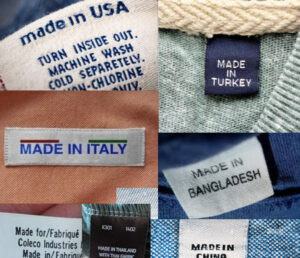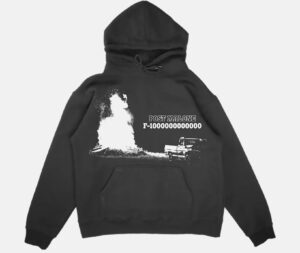In an era where personal safety is becoming an increasingly significant concern, advancements in material science and strategic marketing have converged to create a product that appeals to both practicality and emotional needs: the stab-proof jacket. This garment, designed to offer protection against sharp weapons like knives, combines cutting-edge material technology with a marketing strategy that taps into societal fears about personal security. While the product itself is a feat of engineering, its success owes just as much to how it is marketed.
Material Science Behind Stab-Proof Jackets
What Makes a Jacket Stab-Proof?
Stab-proof jackets are engineered to resist penetration by sharp objects. They achieve this through a combination of advanced materials and structural designs. Key components typically include:
1.High-Performance Fabrics:
•Kevlar: A synthetic fiber renowned for its strength-to-weight ratio. Kevlar is a staple in ballistic armor and stab-resistant clothing due to its ability to absorb and dissipate energy.
•Dyneema: Known as the world’s strongest fiber, Dyneema offers superior cut resistance and durability.
•Spectra: A high-strength polyethylene fiber that provides lightweight stab resistance while maintaining flexibility.
2.Layering Technology:
Stab-proof jackets often consist of multiple layers of these fabrics. The outer layers are designed to slow or blunt the force of the stab, while the inner layers absorb and disperse the remaining energy to prevent penetration.
3.Composite Materials:
Some jackets incorporate hard plates made of ceramics, carbon fiber, or metal alloys for added protection in high-risk scenarios. These plates are strategically placed in vulnerable areas such as the chest or back.
4.Non-Newtonian Materials:
Emerging technologies have introduced non-Newtonian fluids, which harden upon impact, to improve flexibility without compromising protection. These materials allow for lighter, more comfortable jackets that still offer high levels of resistance.
Testing and Standards
Stab-proof jackets undergo rigorous testing to ensure their effectiveness. Standards such as the National Institute of Justice (NIJ) in the U.S. or the HOSDB in the U.K. define criteria for stab resistance, including penetration depth, impact force, and durability.
Key testing parameters include:
•Spike vs. Blade Resistance: Different designs are tested against varying threats, as the mechanics of a spike penetration differ significantly from a slashing motion.
•Multilayer Penetration: Simulated attacks are performed at various angles and forces to evaluate how the layers respond under stress.
•Wear and Tear: Jackets are subjected to environmental simulations, including heat, moisture, and abrasion, to ensure long-term reliability.
The Role of Fear in Marketing
While the material science behind stab-proof jackets is impressive, their widespread adoption owes a great deal to marketing strategies that leverage societal fears about safety and crime. Fear-based marketing appeals to the instinctual drive for self-preservation, positioning the product as a necessary investment in personal security.
Key Marketing Tactics
1.Highlighting Crime Statistics:
Many campaigns use rising crime rates—particularly knife-related incidents—as a rationale for owning stab-proof clothing. This data, while factual, is often presented in ways that amplify public anxiety.
2.Scare Tactics:
Advertising frequently includes dramatic scenarios, such as reenactments of knife attacks, to emphasize the potential risks faced in everyday life. These visuals create a visceral response, making the product seem indispensable.
3.Testimonials and Endorsements:
Personal stories from survivors or endorsements from law enforcement professionals add credibility and emotional weight to the marketing message.
4.Exclusivity and Prestige:
Some brands position stab-proof jackets as luxury or tech-forward items, emphasizing cutting-edge materials and sleek designs. This shifts the narrative from fear to empowerment, appealing to a broader audience.
Ethical Concerns
Fear-based marketing, while effective, raises ethical questions. Critics argue that it exploits societal anxieties for profit, potentially creating a heightened sense of insecurity. For example:
•Exaggeration of Risks: The actual likelihood of being attacked with a knife may be statistically low, but fear-based campaigns can make the threat feel omnipresent.
•Normalization of Protective Gear: Promoting such products as everyday essentials might contribute to a culture of fear, where individuals feel unsafe without armor-like clothing.
•Accessibility Issues: By framing safety as a commodity, these campaigns risk alienating those who cannot afford such products.
Cultural and Societal Implications
The introduction of stab-proof jackets reflects broader societal trends and concerns. These garments are as much a response to cultural shifts as they are to technological advancements.
Urbanization and Safety Concerns
In densely populated urban areas, concerns about personal safety are amplified. Stab-proof jackets are marketed as solutions for city dwellers navigating crowded streets, late-night commutes, or high-crime neighborhoods.
Fashion Meets Functionality
Some brands have embraced the challenge of making stab-proof clothing stylish. By incorporating minimalist designs, neutral colors, and versatile silhouettes, they have positioned these jackets as both practical and fashionable, making them appealing to a wider audience.
The Militarization of Everyday Life
The increasing popularity of protective gear blurs the line between civilian and military-grade clothing. Critics worry this trend normalizes a “combat-ready” mindset, fostering a culture of suspicion and defensiveness.
Stab-Proof Jackets: Practical Applications
While marketed to the general public, stab-proof jackets have specific use cases where their practicality shines.
Professionals in High-Risk Environments
•Law Enforcement: Police officers often wear stab-proof vests during riots or in areas where knife-related crimes are prevalent.
•Security Personnel: Bodyguards and security professionals benefit from lightweight, concealable options that provide protection without restricting movement.
•Emergency Responders: Paramedics and firefighters may use stab-resistant clothing when operating in unpredictable or hostile environments.
Public Use
For everyday consumers, stab-proof jackets are marketed as protective gear for commuting, night shifts, or outdoor activities in areas perceived as unsafe.
Specialized Markets
Stab-proof jackets have also found niches in outdoor sports (such as hunting) and hazardous work environments (construction or forestry), where sharp tools pose risks.
Advancements in Future Designs
As material science evolves, stab-proof jackets are expected to become lighter, more comfortable, and more effective. Some exciting areas of development include:
1.Smart Fabrics:
Incorporating sensors to monitor impact force, wear, or damage, smart fabrics could alert wearers to potential vulnerabilities in real-time.
2.Sustainable Materials:
With growing concerns about environmental impact, manufacturers are exploring eco-friendly alternatives to synthetic fibers like Kevlar.
3.Enhanced Flexibility:
Researchers are working on materials that offer maximum protection without compromising mobility, making jackets more practical for everyday use.
4.Integrated Technology:
Future jackets may include features such as GPS tracking, emergency alerts, or built-in communication systems.
Critique: Are Stab-Proof Jackets a Solution or a Symptom?
While stab-proof jackets provide a tangible sense of security, they also raise deeper questions about societal priorities and the root causes of violence.
Addressing the Cause, Not the Symptom
Investing in social programs, mental health support, and crime prevention initiatives may offer more sustainable solutions to violence than personal protective gear.
The Risk of Overreliance
Relying on protective clothing as a safeguard against crime might lead to complacency in addressing larger societal issues, such as economic inequality or inadequate law enforcement.
The stab-proof jacket represents a fascinating intersection of material science, fashion, and marketing. Its development is a testament to building safety into everyday items, while its marketing reveals the power of fear to drive consumer behavior. However, the product also serves as a mirror reflecting society’s anxieties and priorities.
While these jackets offer undeniable value in specific contexts, their widespread adoption raises questions about how fear is commodified and whether such innovations address the root causes of insecurity. As technology advances and marketing evolves, the stab-proof jacket will remain a compelling case study in how science and society shape one another.
No comments yet.







